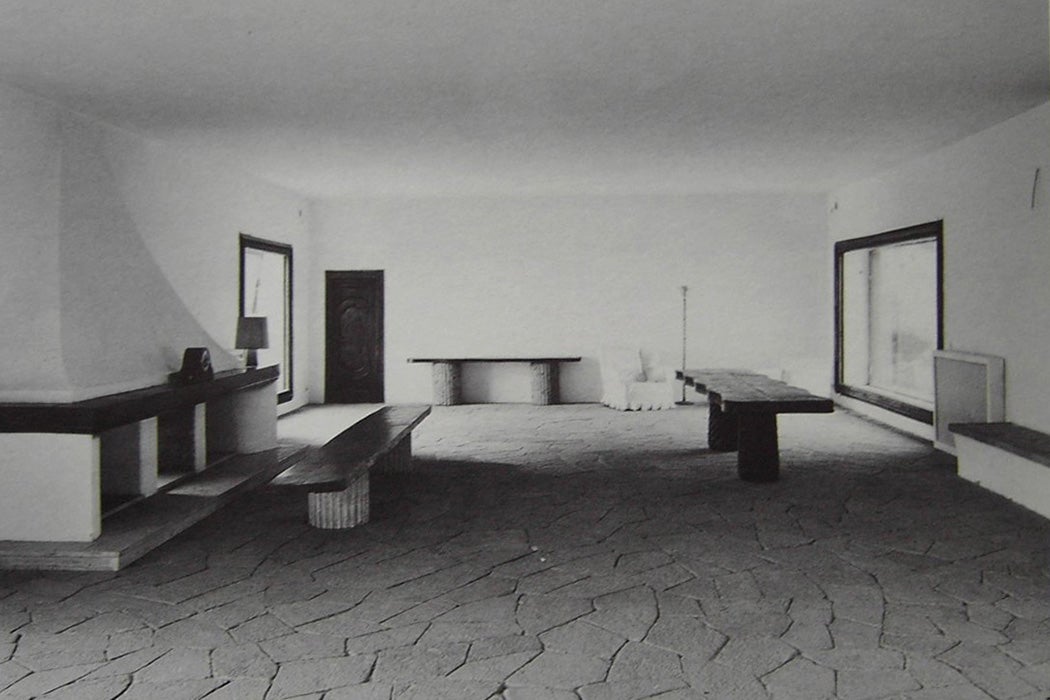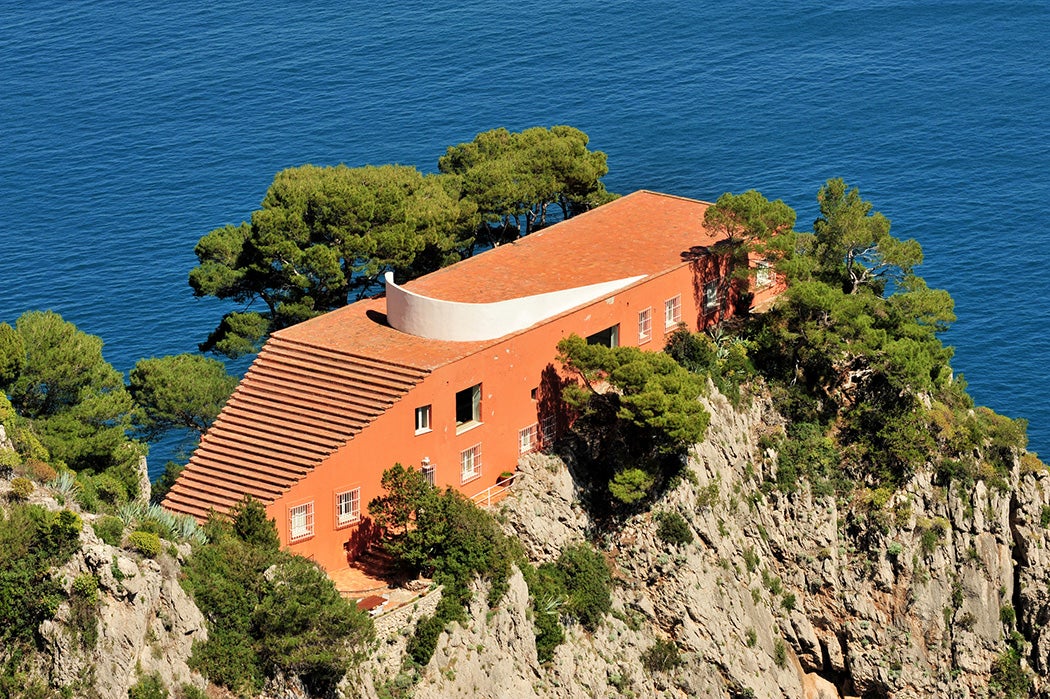It’s like no other house in the world.
Critics over the years have likened the Casa Malaparte to a coffin, submarine, shipwreck, fallen brick, or fossil remains of some ancient monster. Others have stressed the similarities to a temple, prison, palace, museum, altar, or mausoleum.
The structure “occupies a central place in architectural culture,” writes critic Davide Spina. It’s not just that it’s been a dramatic setting for movies and commercials, it’s also ambiguous stylistically. Is it “surrealist, rationalist, vernacular, modern, postmodern, or something else entirely?”
The original architect, Adalberto Libera, was superseded by the house’s owner, Curzio Malaparte, who ended up redesigning the building and working with a local contractor to complete it in the 1940s. Libera didn’t consider the finished house to be his own work.
Calling Malaparte the “arch Italian,” Spina explores the building as the “fullest expression” of “the marriage of goodness and badness” that characterized Malaparte’s life and work.
So who was he? Curzio Malaparte was born in Prato, Italy, in 1898, as Kurt Erich Suckert. (His father was German.) A veteran of the horrific Alpine trench warfare of the Italian Front in World War I, Suckert emerged from the war with his lungs damaged by mustard gas. He adopted his pen name in the early 1920s, wanting to sound as Italian as he felt. After World War I, he became a Fascist. After World War II, a Communist. As polemicist, journalist, novelist, and filmmaker, Malaparte’s résumé might be headed with “provocateur.”

Malaparte, the “bad part,” is a conscious anthesis of “Bonaparte,” originally Buonaparte. Though initially a supporter of Mussolini, Malaparte was jailed by the dictator on Lipari, an island off Sicily. His crime? Publishing a how-to guide to coups d’etat. The sentence wasn’t terminal. During World War II, Malaparte reported from the Eastern Front. His novels Kaputt (1944) and The Skin (1949) are highly regarded. His very readable Paris diary, documenting his return to Paris after the end of his second war, has now been translated into English for the first time.
Malaparte said he wanted his villa for writing. As an early adopter of fascismo, he had always, writes Spina, done his best work “in the thick of the action.” Yet Casa Malaparte turned out to be “an excellent device for extending the reach of his creative production, for perpetuating his legacy and creating a myth around his persona. Most significantly, perhaps it elicits that abandonment of rational thinking that Malaparte advocated in his political writings.”
Weekly Newsletter
Spina writes that the house didn’t prove to be a writer’s nook, but the views—of the building itself, as well as from the flat root and from inside, all seen to good effect in Jean-Luc Godard’s Contempt (1963)—certainly seem conducive of something.
With Malaparte actually buried in the hills above Prato, his villa might best be considered a cenotaph, a memorial without a body.







